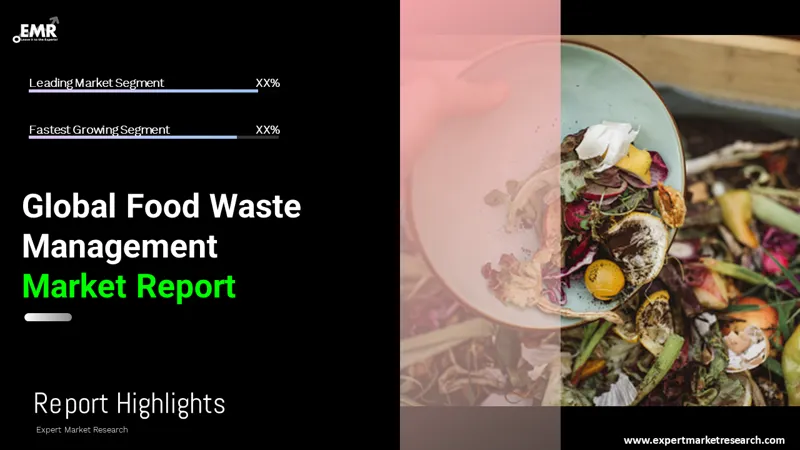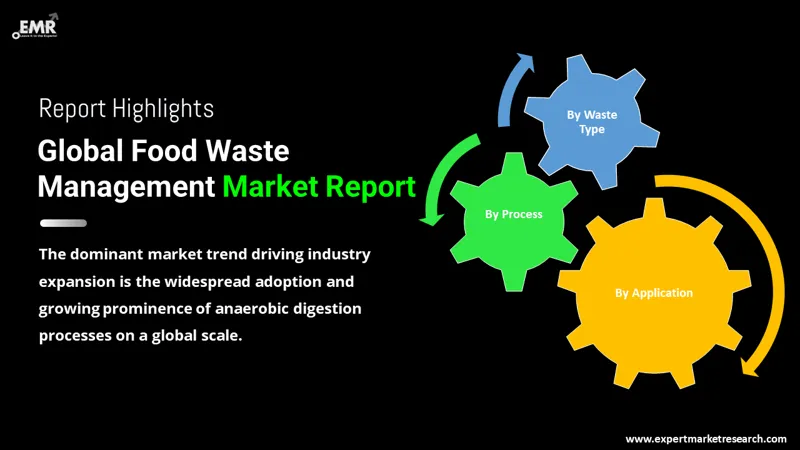
Consumer Insights
Uncover trends and behaviors shaping consumer choices today
Procurement Insights
Optimize your sourcing strategy with key market data
Industry Stats
Stay ahead with the latest trends and market analysis.
The global food waste management market attained USD 40.87 Billion in 2025. The market is expected to grow at a CAGR of 5.30% during the forecast period of 2026-2035, attaining a value of USD 68.50 Billion by 2035. Rapid industrialisation and the rising R&D activities are expected to have a positive impact on the growth of the food waste management market.
Base Year
Historical Period
Forecast Period
Compound Annual Growth Rate
5.3%
Value in USD Billion
2026-2035
*this image is indicative*

Read more about this report - REQUEST FREE SAMPLE COPY IN PDF
Food waste is defined as any food that is discarded, whether solid or liquid. This includes organic residues, food scraps, or edible food that has been thrown away for any reason. The food waste management market can be segmented into waste type, process, and application.
The industry can be divided based on waste type as:
The industry can be divided based on process as:
The industry can be broadly categorised based on application into:
Looks into the regional markets of food waste management like:

Read more about this report - REQUEST FREE SAMPLE COPY IN PDF
The global food waste management market is driven by the increasing use of organic waste for animal feed and fertilizer production, reducing greenhouse emissions, and the increasing energy requirements. It is also probable that the increased consumption of processed food, including ready-to-eat meals, will boost the demand for food waste management further. It is expected that the governments’ initiatives to educate people about appropriate fruit and vegetable storage methods to prevent rotting will drive the market growth.
Anaerobic digestion is a recent trend in technology that is expected to boost the industrial growth of food waste management as it helps recover energy and nutrients from the products. The separation and waste collection are the key challenges that are anticipated to provide impetus to the industry growth over the forecast period. It is expected that the adverse environmental effects of incineration and landfill techniques will hamper the market growth.
The report presents a detailed analysis of the following key players in the global food waste management market, looking into their capacity, market shares, and latest developments like capacity expansions, plant turnarounds, and mergers and acquisitions:
The EMR report gives an in-depth insight into the industry by providing a SWOT analysis as well as an analysis of Porter’s five forces.




*While we strive to always give you current and accurate information, the numbers depicted on the website are indicative and may differ from the actual numbers in the main report. At Expert Market Research, we aim to bring you the latest insights and trends in the market. Using our analyses and forecasts, stakeholders can understand the market dynamics, navigate challenges, and capitalize on opportunities to make data-driven strategic decisions.*
Get in touch with us for a customized solution tailored to your unique requirements and save upto 35%!
In 2025, the global food waste management market attained a value of nearly USD 40.87 Billion.
The market is projected to grow at a CAGR of 5.30% between 2026 and 2035.
The major drivers of the industry, such as the growing utilisation of organic waste for animal feed and fertiliser production, favourable government policies, growing focus to reduce greenhouse emissions, increasing demand for energy, and advancement in biotechnology, are expected to aid the market growth.
The key market trend guiding the industry growth is the increasing popularity of anaerobic digestion process globally.
The major regions in the industry are North America, Latin America, the Middle East and Africa, Europe, and the Asia Pacific.
Cereals, dairy products, fruits and vegetables, meat, fish and seafood, and processed foods form the major waste types in the industry.
The major processes involved in the food waste management are aerobic digestion, anaerobic digestion, and incineration/combustion.
The significant food waste management applications in the industry include animal feed, fertilizers, biofuel, and power generation.
The major players in the industry are Veolia Environnement S.A., Suez WTS USA, Inc., WM Intellectual Property Holdings, L.L.C., Waste Connections, Republic Services, Inc, Remondis, and Covanta, among others.
Explore our key highlights of the report and gain a concise overview of key findings, trends, and actionable insights that will empower your strategic decisions.
| REPORT FEATURES | DETAILS |
| Base Year | 2025 |
| Historical Period | 2019-2025 |
| Forecast Period | 2026-2035 |
| Scope of the Report |
Historical and Forecast Trends, Industry Drivers and Constraints, Historical and Forecast Market Analysis by Segment:
|
| Breakup by Waste Type |
|
| Breakup by Process |
|
| Breakup by Application |
|
| Breakup by Region |
|
| Market Dynamics |
|
| Competitive Landscape |
|
| Companies Covered |
|
| Report Price and Purchase Option | Explore our purchase options that are best suited to your resources and industry needs. |
| Delivery Format | Delivered as an attached PDF and Excel through email, with an option of receiving an editable PPT, according to the purchase option. |
Datasheet
One User
USD 2,499
USD 2,249
tax inclusive*
Single User License
One User
USD 3,999
USD 3,599
tax inclusive*
Five User License
Five User
USD 4,999
USD 4,249
tax inclusive*
Corporate License
Unlimited Users
USD 5,999
USD 5,099
tax inclusive*
*Please note that the prices mentioned below are starting prices for each bundle type. Kindly contact our team for further details.*
Flash Bundle
Small Business Bundle
Growth Bundle
Enterprise Bundle
*Please note that the prices mentioned below are starting prices for each bundle type. Kindly contact our team for further details.*
Flash Bundle
Number of Reports: 3
20%
tax inclusive*
Small Business Bundle
Number of Reports: 5
25%
tax inclusive*
Growth Bundle
Number of Reports: 8
30%
tax inclusive*
Enterprise Bundle
Number of Reports: 10
35%
tax inclusive*
How To Order

Select License Type
Choose the right license for your needs and access rights.

Click on ‘Buy Now’
Add the report to your cart with one click and proceed to register.

Select Mode of Payment
Choose a payment option for a secure checkout. You will be redirected accordingly.
Gain insights to stay ahead and seize opportunities.

Get insights & trends for a competitive edge.

Track prices with detailed trend reports.

Analyse trade data for supply chain insights.

Leverage cost reports for smart savings

Enhance supply chain with partnerships.

Connect For More Information
Our expert team of analysts will offer full support and resolve any queries regarding the report, before and after the purchase.
Our expert team of analysts will offer full support and resolve any queries regarding the report, before and after the purchase.
We employ meticulous research methods, blending advanced analytics and expert insights to deliver accurate, actionable industry intelligence, staying ahead of competitors.
Our skilled analysts offer unparalleled competitive advantage with detailed insights on current and emerging markets, ensuring your strategic edge.
We offer an in-depth yet simplified presentation of industry insights and analysis to meet your specific requirements effectively.
Share